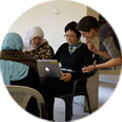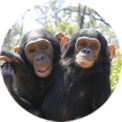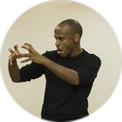The most distinctive and powerful characteristic of human language is compositionality: the ability to create and interpret complex expressions in terms of their meaningful parts and the ways in which they combine. The Grammar of the Body project, inspired by sign languages of deaf people, is working to create a model of linguistic compositionality that emanates from the human body – embodied compositionality -- and to provide clues to its evolutionary origins.
What can we learn from sign languages? In creating new sign languages, humans take full advantage of the affordances of the physical system, recruiting not only the hands, but also the face, head, and body in the organization of information into complex linguistic messages. Is this embodied compositionality, which unfolds gradually in newly emerging sign languages, the foundation of all language?
In this interdisciplinary research project, we explore this question in five subprojects shown below.
Wendy Sandler, Marianne Gullberg, and Carol Padden (eds.). (2019). Visual Language. Frontiers in Psychology ebook.
Sandler, Wendy. (2018). The body as evidence for the nature of language. Frontiers in Psychology.











